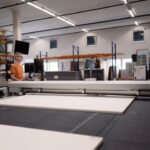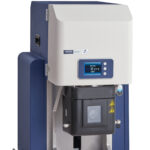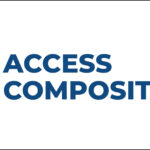The Northwestern International Institute for Nanotechnology received an $8.5 million grant from the U.S. Department of Defense last month to develop four-dimensional printing technology.
The grant, awarded by the DOD’s Multidisciplinary University Research Initiative program, will be dispensed over five years.
Milan Mrksich, one of the project’s five senior participants, said that while most people are familiar with the three dimensions of length, width and depth, there are often misconceptions about the fourth property of a four-dimensional object. Mrksich used Legos as an analogy to describe 4D printing technology.
“If you take Lego blocks, you can basically build any structure you want by controlling which Lego is connected to which Lego and controlling all their dimensions in space,” Mrksich said. “Within an object made up of nanoparticles, we’re controlling the placement — as we use a printer to control the placement of every particle, our fourth dimension lets us choose which nanoparticle with which property would be at each position.”
The printing technology will allow scientists to create materials designed to respond to specific signals or substances, which in turn could have applications in organ replacement and adaptive optics, among other areas, Mrksich said.
“By working together and developing many different building blocks and having those be compatible with the 4D printer, we could create a technology that was important across many fields,” he said.
The team also consists of experts from the University of Miami, University of Maryland and University of California, San Diego.
Hugh DeLong, program manager with the Air Force Research Laboratory’s Office of Scientific Research, said he and other members of the grant selection team chose Mirkin’s team because of its members’ varied experience.
“They had a broad, multidisciplinary team that covered all the basics,” DeLong said. “They were actually working on a lot of different structures and functions, versus some of the other proposals, which were more limited in the materials that they were using.”
DeLong said he will monitor the team’s progress, including annual reviews and a major assessment at the end of the project’s third year to determine whether they will continue to receive funding for years four and five.
Chad Mirkin, the director of the project, has worked in molecular printing technology for years. He invented a type of technology called dip-pen nanolithography, which delivers small packets of molecules to a surface that are designed to react with the surface to form structures that are a single molecule thick. Mirkin said the 4D printing technology the team is working on will push the capabilities of multidimensional printing.
“3D printers provide the capability to control macroscopic form and function but are limited in resolution and the ability to make composite materials,” Mirkin said. “The 4D printer will allow one to control … the entire compositional makeup of any device and material produced. It will do it rapidly and provide prototyping with control over end function with unprecedented flexibility.”
Mirkin also noted the grant’s impact on public perception, saying it provides “further validation of the importance of nanoscience and the leading role Northwestern plays in driving and developing the field.”














